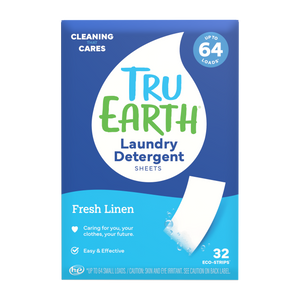Laundry day is a regular occurrence in most households, and while we often focus on separating colors and fabrics, another key aspect is how much laundry detergent to use per load. Using the right amount ensures clean and fresh clothes while preventing waste and saving money.
This complete guide, will explore the details of determining the ideal detergent dosage for various load sizes and washer types. By the end of this guide, you'll have the knowledge to optimize your laundry routine and achieve spotless results.

The Importance of Proper Detergent Dosage
Under-Dosing vs. Overdosing
Using too little detergent can result in inadequate cleaning, leaving behind dirt, stains, and odors on your clothes. On the other hand, overdosing can lead to excessive suds, reduced rinsing efficiency, and potential detergent residues on fabrics.
Finding the Right Balance
Achieving the right balance between under-dosing and over-dosing is essential. It not only ensures clean laundry but also conserves detergent and reduces environmental impact.
Factors Affecting Detergent Dosage
Load Size
The size of your laundry load plays a significant role in determining how much detergent to use. Smaller loads require less detergent, while larger ones may need more.
Soil Level
The level of soil or dirt on your clothes matters. Heavily soiled items may need a higher detergent dose, while lightly soiled ones can be cleaned with less.
Water Hardness
Water hardness, determined by mineral content, affects detergent efficiency. In areas with hard water, you may need more detergent to counteract the minerals.
Washer Type
Different types of washers, such as high-efficiency (HE) machines, front-loaders, and top-loaders, have varying detergent requirements. It's essential to follow manufacturer guidelines.
Calculating Detergent Dosage
Manufacturer Guidelines
Always start by checking the manufacturer's recommendations on the detergent packaging. This information provides a baseline for dosing.
Laundry Detergent Ballpark Figures
As a general guideline for standard washers and average soil levels, you can use the following approximate detergent amounts:
- Small load: 1/4 to 1/3 of the detergent cup
- Medium load: 1/2 of the detergent cup
- Large load: 3/4 of the detergent cup
However, these figures can vary based on factors like water hardness and machine type.
Adjusting Detergent Dosage
Load Size
As mentioned earlier, adjust the detergent amount based on the size of your load. Larger loads may require more detergent, while smaller ones need less.
Soil Level
For heavily soiled items, you can increase the detergent dosage slightly. Conversely, use less detergent for lightly soiled or lightly worn clothes.
Water Hardness
In areas with hard water, you may need to increase detergent dosage to compensate for reduced cleaning efficiency due to mineral interference.
HE and Front-Loading Machines
High-efficiency (HE) machines and front-loaders typically require less detergent compared to traditional top-loaders. Always follow the manufacturer's guidelines for your specific washer.
Tips for Efficient Detergent Use
Use HE Detergent for HE Machines
If you have a high-efficiency washer, make sure to use HE detergent. It is formulated to produce fewer suds, ensuring optimal performance in these machines.
Pre-treat Stains
To improve stain removal, pre-treat stains with a stain remover or a small amount of undiluted detergent before washing.
Don't Overload the Washer
Overloading the washer can hinder detergent distribution and rinsing. Leave enough space for clothes to move freely.
Opt for Laundry Detergent Eco-Strips
Tru Earth laundry detergent strips provide you with the perfect pre-measured dose, eliminating the risk of overdosing. Use the correct number of eco-strips for your load size, ensuring a hassle-free and eco-friendly laundry experience!
The Environmental Impact
Reducing Waste
Using the right amount of detergent not only ensures clean clothes but also reduces waste by preventing excess detergent usage.
Water Conservation
Over-dosing can lead to more rinsing cycles, consuming extra water. By using the correct dosage, you contribute to water conservation efforts.
Impact on Septic Systems
Overuse of detergent can negatively impact septic systems by introducing excessive chemicals and suds. Proper dosing is gentler on septic systems.
Understanding Perfect Detergent Dosage
Knowing how much laundry detergent to use per load is an important part of achieving clean, fresh, and well-maintained clothing. By considering factors such as load size, soil level, water hardness, and washer type, you can tailor your detergent dosage for optimal results.
Remember that finding the right balance not only ensures effective cleaning but also reduces waste, conserves water, and minimizes the environmental impact of your laundry routine. As you continue to fine-tune your laundry process, you'll not only enjoy spotless clothes but also contribute to a more sustainable and eco-conscious lifestyle.

